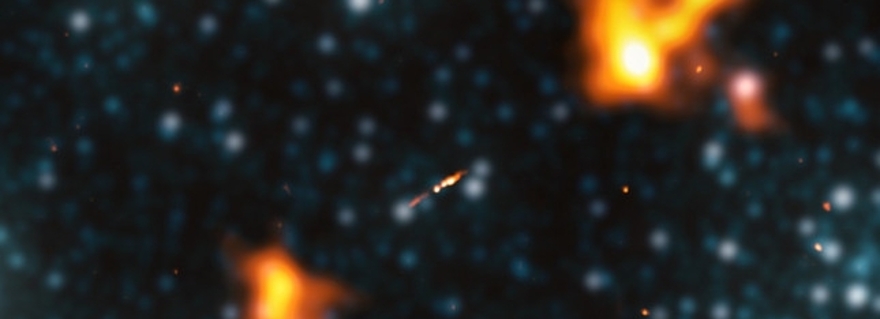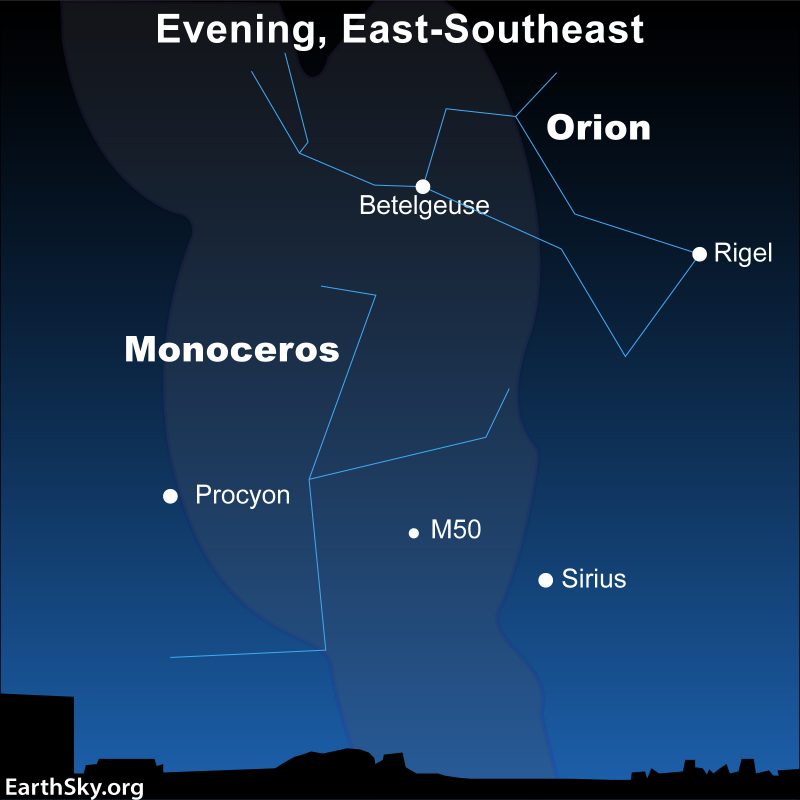
Astronomers find largest galaxy yet, in radio
Astronomers said last week (February 16, 2022) they’ve found the largest galaxy yet seen, not in visible light, but via radio astronomy. This galaxy spans a mind-boggling 16 million light-years. Some 100 Milky Way galaxies laid end to end would about equal the length of this newly discovered galaxy. Scientists have named the new galaxy Alcyoneus, for the giant of Greek myth. They said it’s so large that it might provide insights about the the Cosmic Web – the observed network of filaments and clusters, made of galaxies, plus the great voids between them – that astronomers observe all around us in the modern universe.
Alcyoneus lies relatively nearby as galaxies go, only 3 billion light-years away. It spans an area in our sky the size of the full moon.
Martijn Oei of Leiden University led the research team. Their work was to reprocess existing images from the Low Frequency Array (LOFAR) telescope to tease the giant out of the darkness. You can read a pre-print of their paper on arXiv dated February 11, 2022. The paper is accepted for publication in the journal Astronomy and Astrophysics.
The 2022 lunar calendars are here. Order yours before they’re gone!
Alcyoneus’ jets
Alcyoneus gets its enormous size from two huge jets emanating from the galaxy’s central supermassive black hole. The astronomers’ statement said:
A supermassive black hole lurks in the center of many galaxies. [It] slows down the birth of new stars and therefore strongly influences the life cycle of the galaxy as a whole. Sometimes, this leads to tumultuous scenes: the black hole can create two jet streams that catapult the building material for baby stars out of the galaxy at almost the speed of light [186,000 miles per second, or 300,000 km/sec]. In this violent process, the stardust heats up so much that it dissolves into plasma and glows in radio light.
These astronomers said this is the first time anyone has seen a single galaxy with a structure (the two jets) this large.

Probing the cosmic web
Scientists think the plasma plumes or jets from Alcyoneus might help provide insights about what’s called the Cosmic Web. They said in their statement:
The Cosmic Web is another name for the contemporary, grown-up universe, that looks like a network of threads and nodes that astronomers call filaments and clusters, respectively. The galaxies in filaments and clusters are clearly visible themselves, but detecting the medium between galaxies has only been successful in clusters, barring a handful of exceptions. Could Alcyoneus change this?
They went on to say:
Because Alcyoneus, just like the Milky Way, inhabits a filament, its plumes feel a headwind while moving through the medium. This subtly changes the direction and shape of the plumes: they perform a slow dance with an invisible partner. For many years, scientists have proposed that the shapes of and pressures in the plumes of radio galaxies could relate to filament properties, but never before did they find an example where that connection is as plausible as with Alcyoneus.
In other words, Alcyoneus’ plumes are so big and rarefied that the surrounding medium can relatively easily mold them.

Bottom line: Astronomers have discovered the largest radio galaxy yet. It would take 100 Milky Way galaxies laid end to end to equal Alcyoneus and its jets.
Source: The discovery of a radio galaxy of at least 5 Mpc
The post Largest galaxy yet seen, in radio: Alcyoneus first appeared on EarthSky.







0 Commentaires